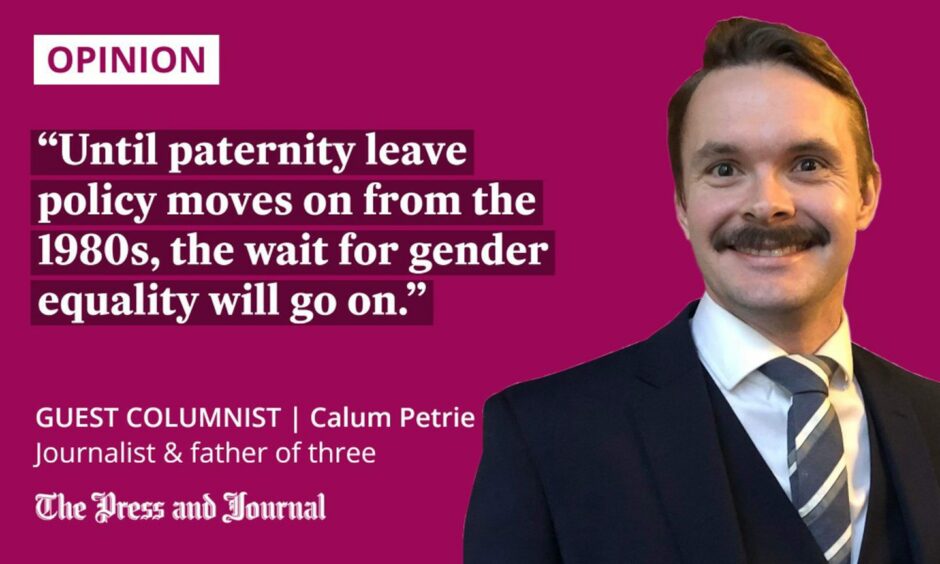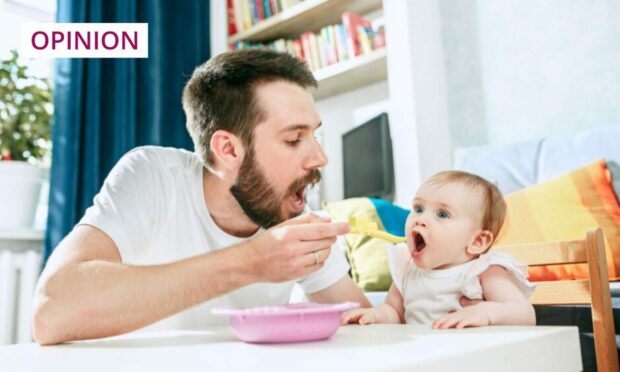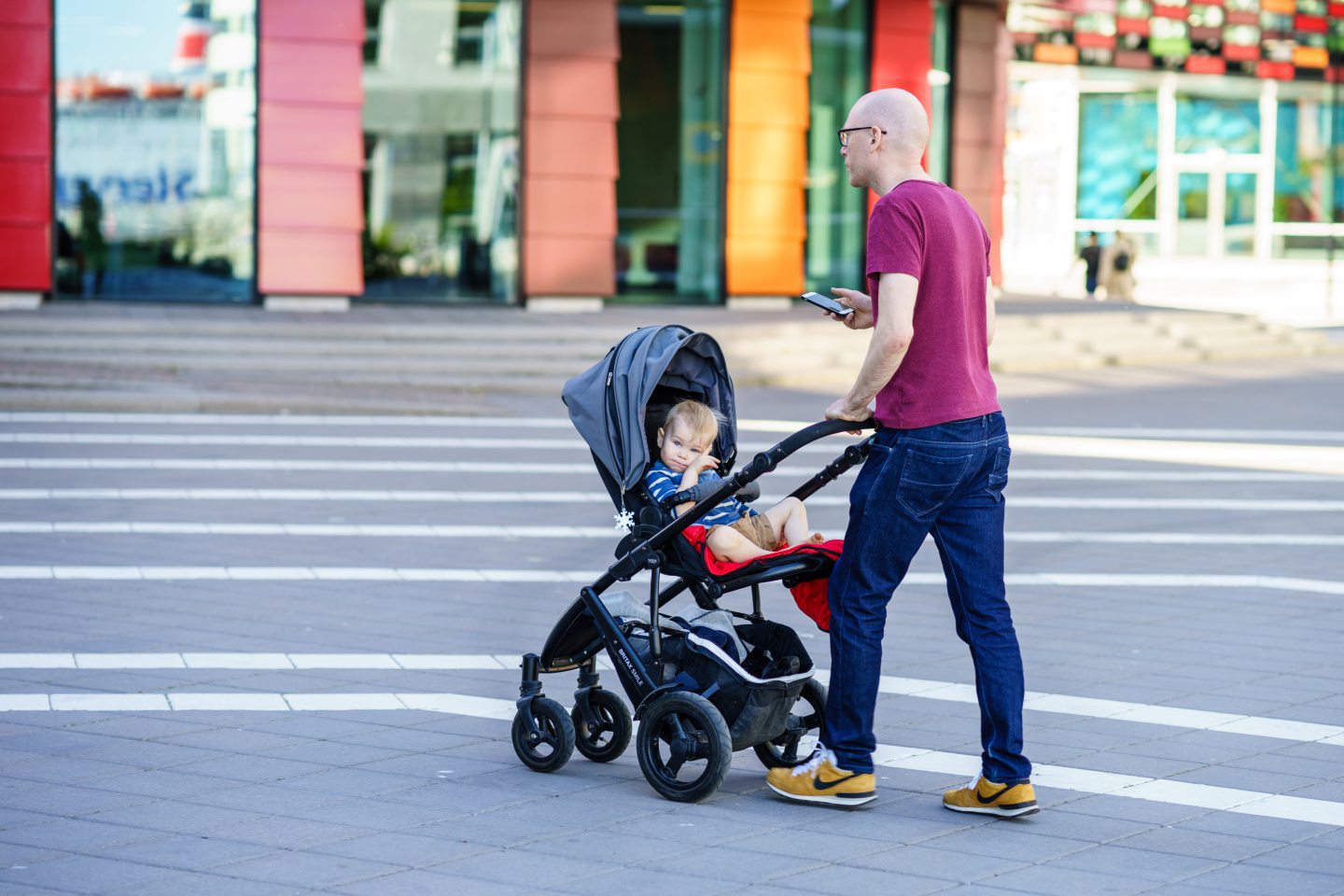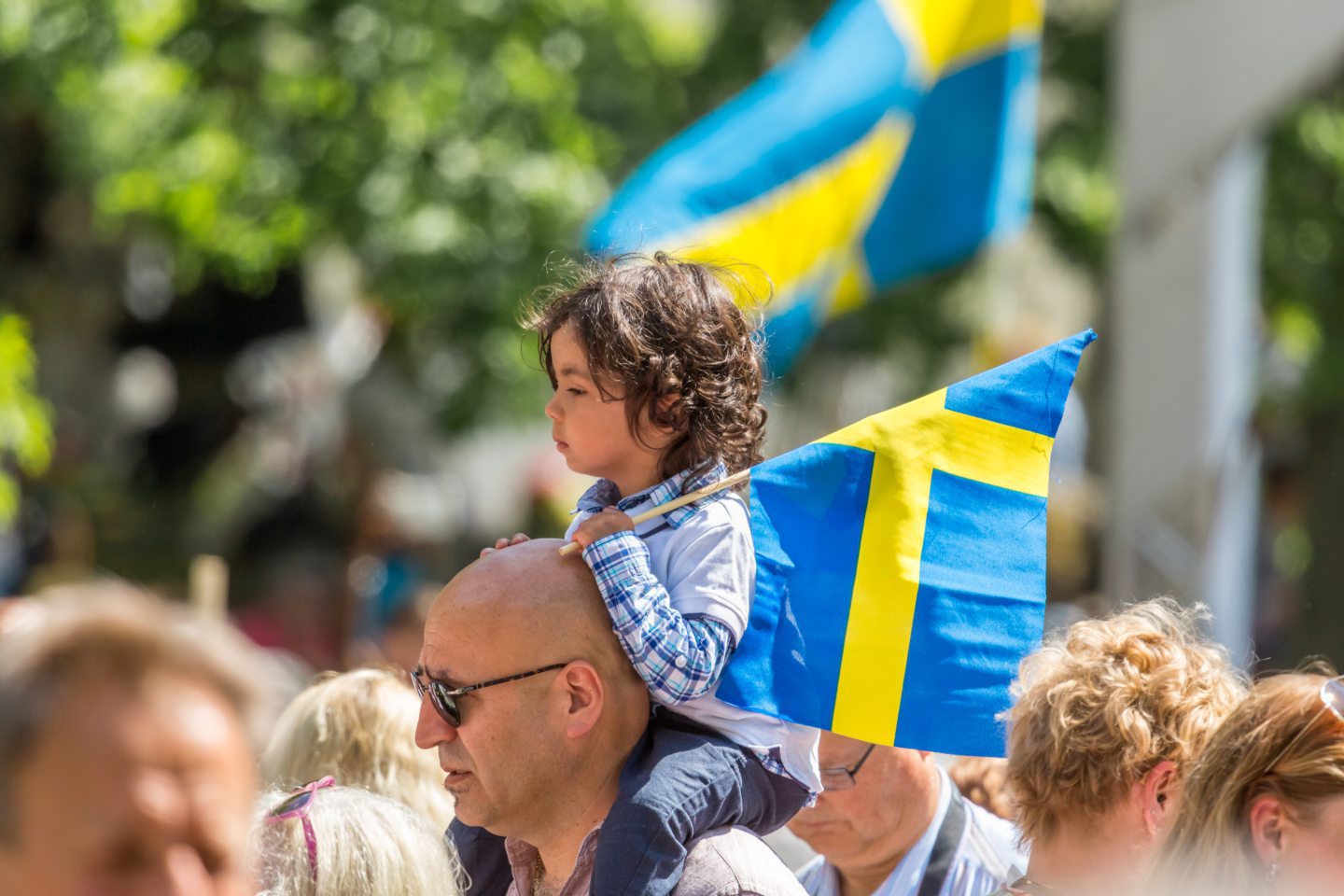For those lucky enough to have a Dad, today is a day to celebrate them.
But is an unfair system preventing fathers from being the best parent they can be?
Mums receive up to 52 weeks’ maternity leave, of which the first six weeks must be paid at 90% of salary, and 33 weeks at a minimum statutory rate.
Dads get just two weeks’ paternity leave, paid at a minimum statutory rate. Some companies are more generous than others but, for Scottish Dads, that’s the rule.

My oldest two children started life in Sweden. Parents there are entitled to 480 days of paid parental leave when a child is born. Each parent is entitled to 240 of those days.
Parents can transfer days to each other, but dads must take at least 90 days. Otherwise, those days are lost. This parental leave can be taken any time, up until the child turns 12.
Quite the contrast to Scottish Dads’ 10 days off with their new child. For many, lockdown was their first experience of spending so much time at home with the kids.
Today’s Dads clearly want to spend more time with their children, especially during the early years. But, as things stand, the system prevents them from doing so.
Former Labour leader Ed Miliband has called for Dads to get 12 weeks’ paternity leave, saying it could “transform society”.
Overwhelming evidence in support of equal paternity leave
All the research shows that, the longer Dads stay at home after a child is born, the greater the benefits for everyone.
For a start, it improves mothers’ health and wellbeing. An analysis of data on more than 4,000 UK women from a maternity survey found that Mums whose partners had taken no paternity leave were more likely to report feeling ill or unwell at three months. And, mothers with more than one child whose partners took no leave reported much higher rates of postnatal depression.
Dads who take paternity leave tend to do more hands-on caring for their children. One UK study by the Fatherhood Institute (FI) – which looked at fathers in the UK and OECD countries – found that fathers who took formal leave were 25% more likely to change nappies, and 19% more likely to feed their babies when eight to 12 months old, as well as to attend to them during the night.
That’s with 10 days’ paternal leave – just think what fathers could do with Swedish-style paternity leave.
Health, relationships, and child development all benefit from stay-at-home Dads
Crucially, evidence from the FI study suggests that this kind of paternal involvement, if established during the early weeks, can last through to toddlerhood and beyond. Fathers who take 10 or more days off work around childbirth are more likely to be involved in childcare when their kids are two to three years old.
Children whose fathers take paternity leave are also less likely to have development problems.
Couples in which the father took more than two weeks to care for their first child were 30% less likely to separate
And, not least, Dads themselves benefit. Swedish Dads taking extended paternity leave had an 18% lower risk of alcohol problems, and a 16% lower risk of early death.
The FI study also found that couples in which the father took more than two weeks to care for their first child were 30% less likely to separate.
Sweden leading the way: benefits to individuals, society and the economy
Then there’s the economic benefit of fathers getting their fair share of parental leave.
Sweden has progressively tweaked its parental leave policy since the 1970s, to the point where, today, it is the envy of mums and dads worldwide.
In 1974, 0.5% of Swedish fathers took paternity leave. Now, it’s frowned upon for them not to take several months of leave.
Gender equality is a good thing in itself, but the Swedes originally shook things up out of economic necessity.
Lars Plantin of Malmö University is a professor of social work, and specialises in family, parenthood and fatherhood.
“We had to do this for economic survival: Sweden is a small country and as we moved from a traditional economy to an information-based one, it made sense to have our better-qualified workers – often women – in work,” he said.
Attitude change required by society
While living in Sweden, I worked for a British company. When my partner became pregnant, my boss in London took a lot of persuading that, yes, I could take however long I wanted off, and yes, I could take it when I wanted. The only obligation is to give your employer two months’ notice.
Swedish Dads aren’t better than Scottish Dads. But they are more hands-on, intimate and expressive, because paternity leave and society allow them to be
When he said: “OK, but you’ll be able to come over for the sales conference in London during it, right?”, it seemed to sum up the totally different mindset between the two countries.
Having been a parent in both countries, Swedish Dads aren’t better than Scottish Dads. But they are more hands-on, intimate and expressive, because paternity leave and society allow them to be.
Culturally, we do appear to be getting closer to the Swedes. Dads here are taking a greater part in their children’s lives than previous generations.
But, until paternity leave policy moves on from the 1980s, that gap will always exist. And the wait for true gender equality will go on.
Calum Petrie is a schools and family journalist for The Press & Journal



Conversation